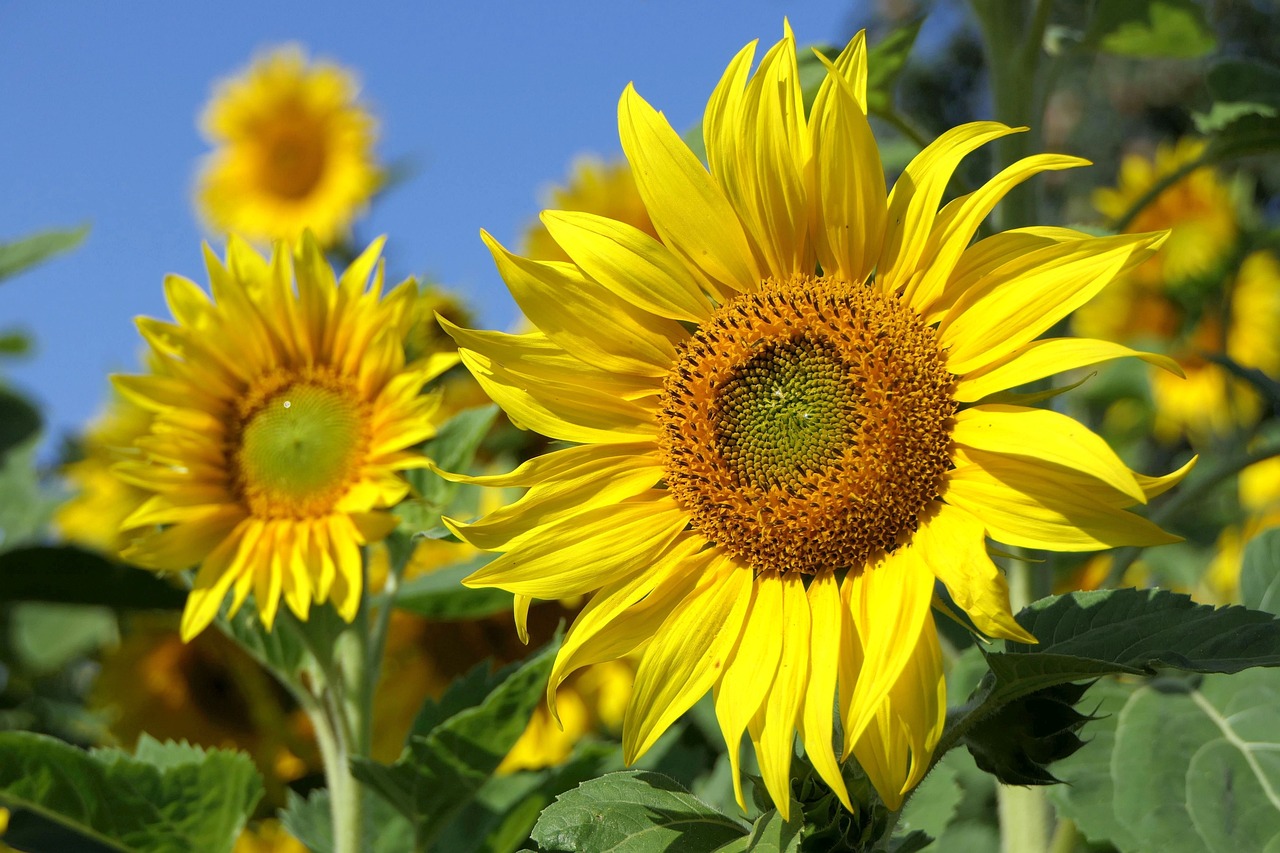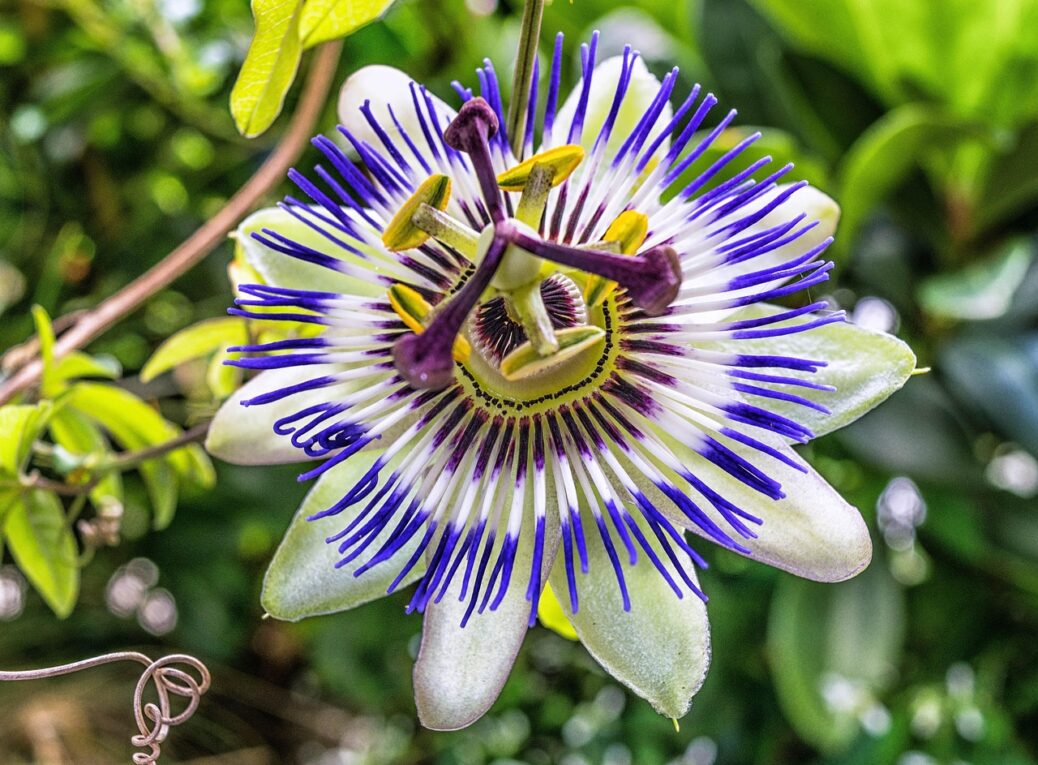Passionflower, (Passiflora incarnata), is a climbing vine native to the south-eastern United States, Central and South America. It has been used traditionally by Native American tribes for centuries as a calming remedy. Today, passionflower is widely recognized for its gentle sedative properties, making it a go-to herb for managing anxiety, insomnia and nervous tension.
Parts of Passionflower Used Medicinally
The aerial parts of the passionflower plant (Passiflora incarnata) are used medicinally. This includes:
- Leaves
- Stems
- Flowers
These parts contain the active compounds, such as flavonoids (like vitexin), alkaloids and gamma-aminobutyric acid (GABA)-like substances, that are responsible for passionflower’s calming, sedative and anxiolytic effects.
The roots and fruit of Passionflower are not typically used in herbal medicine, and some varieties of passionflower (especially ornamental species) may not be safe for consumption, so it’s important to use only certified medicinal-grade aerial parts from Passiflora incarnata.
Is Passionfruit from Passionflower?
No, passionfruit (the edible fruit commonly sold in stores) does not typically come from Passiflora incarnata. Here’s the distinction:
🔸 Passionflower (Passiflora incarnata)
- Grown primarily for medicinal use.
- Native to North America.
- Produces a small fruit sometimes called maypop, which is edible but not the same as the commercial passionfruit.
- Most commonly used are the aerial parts (leaves, stems, flowers) for calming herbal preparations.
🔸 Passionfruit (Passiflora edulis)
- Grown for culinary use. This is the species that produces the juicy, flavorful fruit you find in shops.
- Native to South America.
- Not commonly used medicinally (though it has some nutritional benefits).
Summary:
- ✅ Passiflora incarnata = herbal calming remedy (leaves, stems, flowers)
- ✅ Passiflora edulis = passionfruit (the food)
- ❌ Don’t confuse the two—they have different uses and phytochemical profiles
Passionflower Health Benefits
Passionflower is best known for its ability to support the nervous system. It is commonly used to ease stress, improve sleep quality, and soothe anxious thoughts. Some of its primary benefits include:
Passionflower for Anxiety and Stress
Passionflower contains compounds such as flavonoids and alkaloids that are believed to interact with GABA (gamma-aminobutyric acid) receptors in the brain. GABA is a neurotransmitter that helps calm brain activity, making passionflower especially effective for reducing anxiety without causing drowsiness or mental fog.
Passionflower is often used in herbal anxiety blends and is well-tolerated for long-term support of mood regulation and stress resilience.
Passionflower for Sleep and Insomnia
As a natural sedative, passionflower is commonly used to promote restful sleep. It helps reduce the time it takes to fall asleep and may improve sleep quality, especially in people experiencing insomnia related to racing thoughts or tension.
Unlike many pharmaceutical sleep aids, passionflower does not typically lead to grogginess the next day, making it ideal for gentle, ongoing support.
Passionflower and Nervous System Recovery
Passionflower acts as a nervine, which is a herb that calms and nourishes the nervous system. It’s particularly helpful for people recovering from prolonged stress, burnout or emotional trauma, where calming the nervous system and reducing hypervigilance are key.
Passionflower for Menopause and Hormonal Shifts
Emerging research suggests that passionflower may help ease symptoms of menopause, such as irritability, anxiety and insomnia, due to its calming and hormone-modulating effects.
Its calming effects are thought to be linked to its influence on GABA receptors in the brain, which help regulate nervous system activity and reduce mental overstimulation. During menopause, declining estrogen levels can disrupt neurotransmitter balance, leading to increased anxiety, poor sleep and emotional instability. Passionflower may help re-establish this balance naturally.
Some studies also suggest passionflower may have a mild phytoestrogenic effect, supporting hormonal harmony in a gentle, non-invasive way. When used regularly, it may contribute to an improved sense of calm, reduced hot flashes and better sleep quality in women navigating the menopausal transition.
Passionflower is often used alongside other supportive herbs such as black cohosh, sage and red clover for a more comprehensive menopause protocol.
How to Use Passionflower
Tea: Steep 1 tsp dried passionflower in hot water for 10 minutes. Drink in the evening or before bed.
Tincture: 1–2 ml up to three times daily, or 30 minutes before sleep.
Capsule: 250–500 mg, standardized extract, 1–2x daily.
| Need Personal Advice? Book a private consultation with me, Cath Davis (Master Herbalist) and get expert advice, product recommendations and a plan that works for your body – no guesswork needed. |
Always take care when taking herbs and Read Our Disclaimer.
Passionflower Notes / Side Effects
- Safety: Passionflower is generally considered safe when used as directed, especially in tea or tincture form.
- Drowsiness: In higher doses, passionflower can cause mild sedation or drowsiness. It’s best to avoid driving or operating machinery until you know how it affects you.
- Medication Interactions: Passionflower may interact with:
- Sedatives (e.g., benzodiazepines, barbiturates)
- Antidepressants
- Blood thinners (due to possible mild anticoagulant effect)
If you’re taking prescription medications, consult your healthcare provider before use.
- Pregnancy & Breastfeeding: Not recommended during pregnancy due to possible uterine-stimulating effects. Use during breastfeeding should also be discussed with a qualified practitioner.
- Allergies: Rare allergic reactions have been reported; discontinue use if rash, dizziness, or difficulty breathing occurs.
As with any herb, start with a low dose and increase gradually if needed. For sleep or anxiety, passionflower is best taken 30–60 minutes before bed or stressful events.

